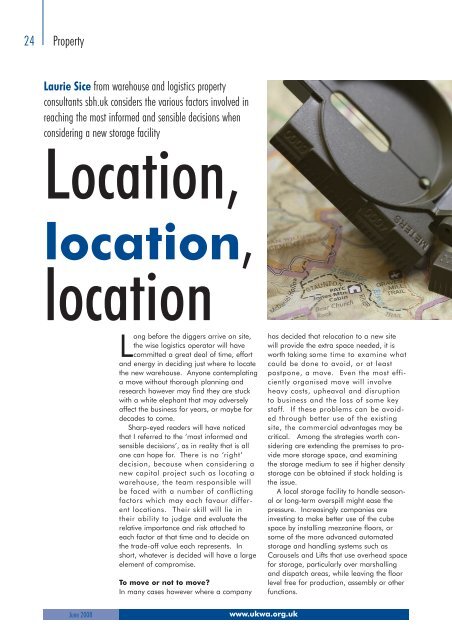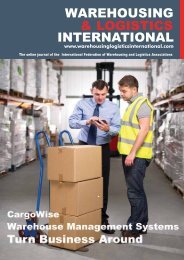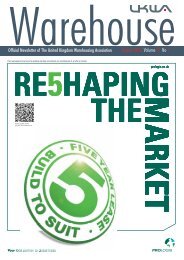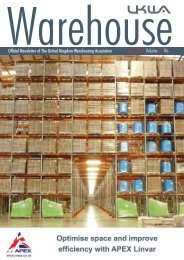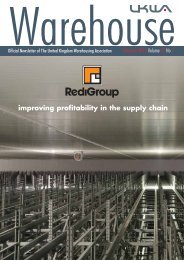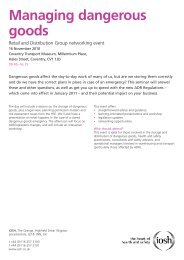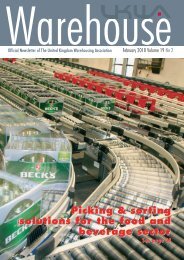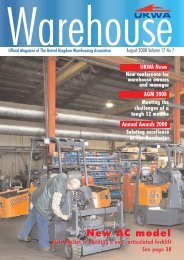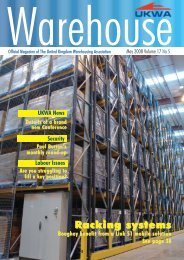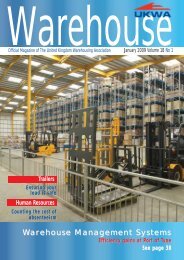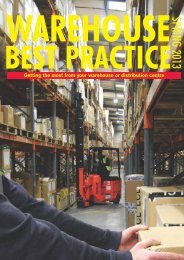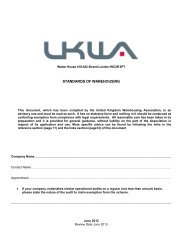UKWA FOR WEB - United Kingdom Warehousing Association
UKWA FOR WEB - United Kingdom Warehousing Association
UKWA FOR WEB - United Kingdom Warehousing Association
Create successful ePaper yourself
Turn your PDF publications into a flip-book with our unique Google optimized e-Paper software.
24 Property<br />
Laurie Sice from warehouse and logistics property<br />
consultants sbh.uk considers the various factors involved in<br />
reaching the most informed and sensible decisions when<br />
considering a new storage facility<br />
Location,<br />
location,<br />
location<br />
Long before the diggers arrive on site,<br />
the wise logistics operator will have<br />
committed a great deal of time, effort<br />
and energy in deciding just where to locate<br />
the new warehouse. Anyone contemplating<br />
a move without thorough planning and<br />
research however may find they are stuck<br />
with a white elephant that may adversely<br />
affect the business for years, or maybe for<br />
decades to come.<br />
Sharp-eyed readers will have noticed<br />
that I referred to the ‘most informed and<br />
sensible decisions’, as in reality that is all<br />
one can hope for. There is no ‘right’<br />
decision, because when considering a<br />
new capital project such as locating a<br />
warehouse, the team responsible will<br />
be faced with a number of conflicting<br />
factors which may each favour different<br />
locations. Their skill will lie in<br />
their ability to judge and evaluate the<br />
relative importance and risk attached to<br />
each factor at that time and to decide on<br />
the trade-off value each represents. In<br />
short, whatever is decided will have a large<br />
element of compromise.<br />
To move or not to move<br />
In many cases however where a company<br />
has decided that relocation to a new site<br />
will provide the extra space needed, it is<br />
worth taking some time to examine what<br />
could be done to avoid, or at least<br />
postpone, a move. Even the most efficiently<br />
organised move will involve<br />
heavy costs, upheaval and disruption<br />
to business and the loss of some key<br />
staff. If these problems can be avoided<br />
through better use of the existing<br />
site, the commercial advantages may be<br />
critical. Among the strategies worth considering<br />
are extending the premises to provide<br />
more storage space, and examining<br />
the storage medium to see if higher density<br />
storage can be obtained if stock holding is<br />
the issue.<br />
A local storage facility to handle seasonal<br />
or long-term overspill might ease the<br />
pressure. Increasingly companies are<br />
investing to make better use of the cube<br />
space by installing mezzanine floors, or<br />
some of the more advanced automated<br />
storage and handling systems such as<br />
Carousels and Lifts that use overhead space<br />
for storage, particularly over marshalling<br />
and dispatch areas, while leaving the floor<br />
level free for production, assembly or other<br />
functions.<br />
June 2008<br />
www.ukwa.org.uk


